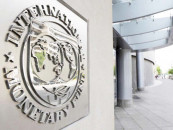CPEC and skills development
The upcoming job opportunities and skills demand can be broadly categorised into three major areas

The writer is a public policy expert and an honorary Fellow of Consortium for Development Policy Research. He tweets at @hasaankhawar
The upcoming job opportunities and skills demand can be broadly categorised into three major areas. First comes the infrastructure-related jobs created by CPEC investments in roads, energy projects, Gwadar port, etc. Most of these jobs are temporary in nature and relate to construction and operationalisation of these projects. It is estimated that the early harvest CPEC projects have already created 30,000 to 70,000 jobs for Pakistani workforce. These include 16,000 labourer and engineers in CPEC energy projects and 13,000 in transport and road sector. With other infrastructure projects in the pipeline like Gwadar Airport, Eastbay Expressway and railway ML-1 upgradation, this number is likely to increase by another 10,000 to 15,000. Anecdotal evidence suggests that high skilled jobs within these projects remain with Chinese workers. The reason may not be any deliberate preference by the investors and rather the absence of requisite skills in the local labour pool.
But the real opportunity will be the future jobs generated for managing and operating these facilities. The logistics and transport sector would be requiring significant number of workers. It is estimated that poor performance of the transport sector results in a loss of 4-6 per cent of GDP annually for Pakistan. With increased investment however this is likely to change, providing avenues for growth.
The second set of jobs would relate to Chinese investments in industry, agriculture and other sectors. Daimler AG has already signed an MoU with the National Logistics Cell for local production of Mercedes-Benz trucks in Pakistan. Similarly, China Overseas Ports Holding Company recently disclosed that about 20-30 companies have joined the Gwadar free zone with direct investment of $460 million in hotels, banking, logistics and fish- processing sectors.
Early evidence suggests that textile and garments, household appliances, cement, light industrial and transportation machinery, mining and agri-businesses are likely to be priority sectors for Chinese investment. Some believe that the sunset industries in China such as steel, aluminium, chemical fibre and papermaking will also be looking at Pakistan as a potential relocation destination.
The third area pertains to meeting the everyday needs of the incoming Chinese population. According to official estimates, there are about 60,000 Chinese living in Pakistan, a six-fold increase since 2009. They need restaurants, grocery stores, cultural activities and educational facilities besides interpreters and domestic staff. Almost all large metropolitans of the world have China towns, catering to the needs of Chinese communities and Pakistan is likely to see its own share of these Chinese localities in the years to come.
It is estimated that CPEC may bring as many as 400,000 to 700,000 direct jobs for Pakistanis in the years to come but in order to prepare the local workforce for these opportunities, we need to have a strategy in place. It is risky to train the local workforce in skills for which the industry is yet to come and a lost opportunity if industries decide not to come to Pakistan due to absence of skilled labour.
The solution is to strike a balance and start with more certain opportunities in infrastructure and prepare the local workforce for jobs in port and airport operations, transport facilitation and logistics sectors in partnership with relevant Chinese companies. The next priority should be the sectors that have some presence in Pakistan but are likely to see more investment such as textiles, household appliances and agri-businesses. Lastly, there is a need to offer training in softer skills to existing workers to make them suitable to work in Chinese enterprises.
Published in The Express Tribune, May 22nd, 2018.
Like Opinion & Editorial on Facebook, follow @ETOpEd on Twitter to receive all updates on all our daily pieces.
















COMMENTS
Comments are moderated and generally will be posted if they are on-topic and not abusive.
For more information, please see our Comments FAQ